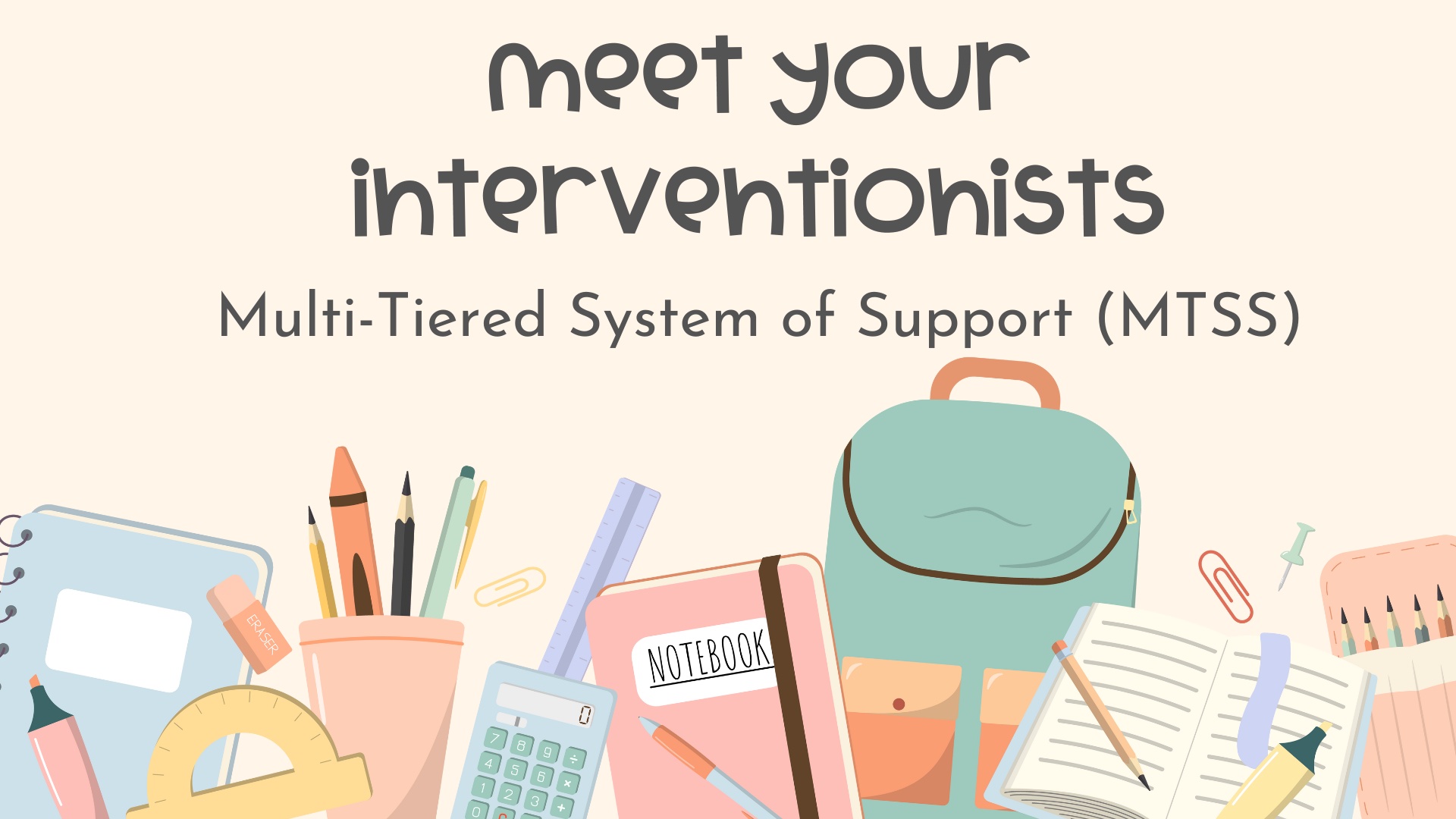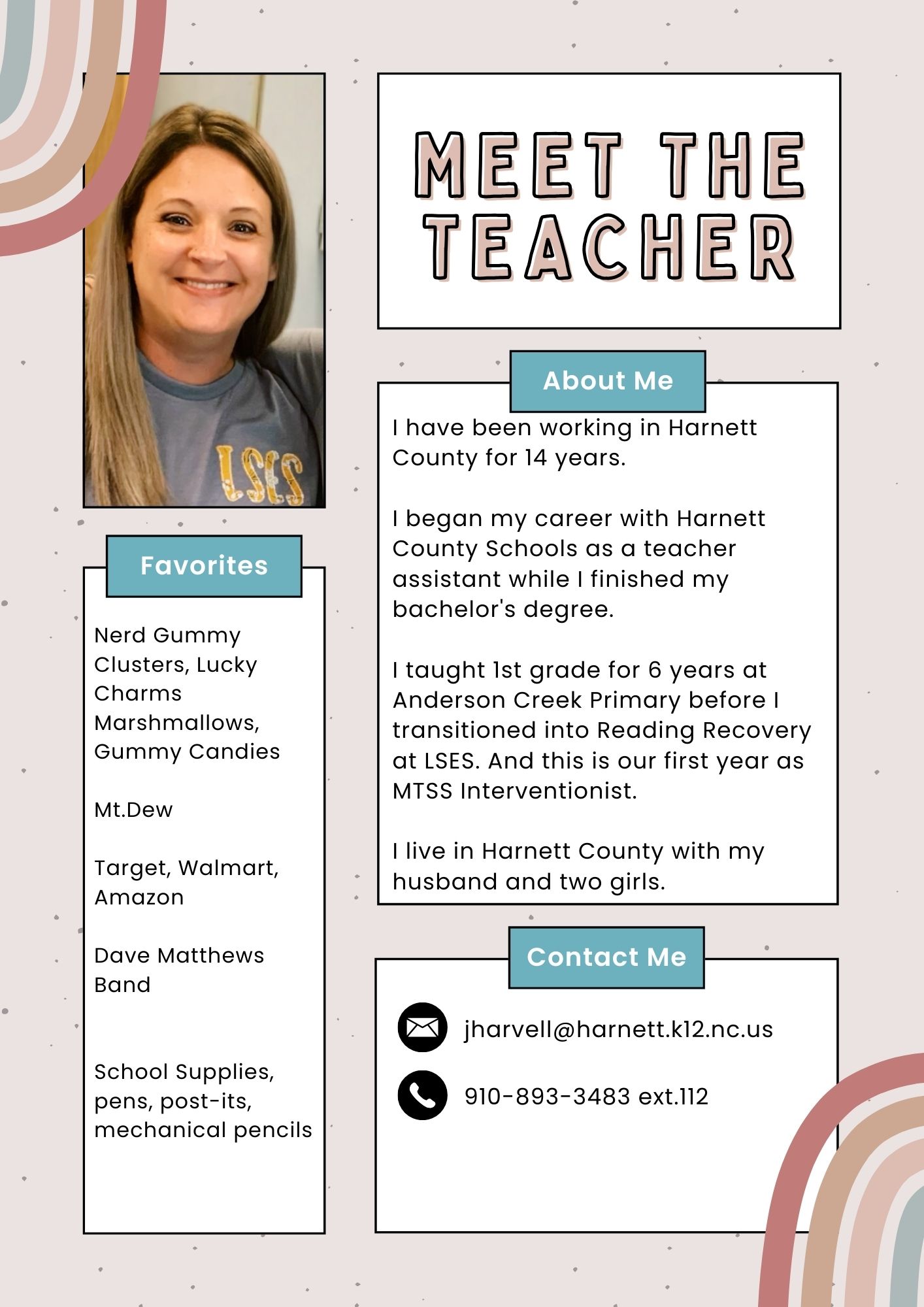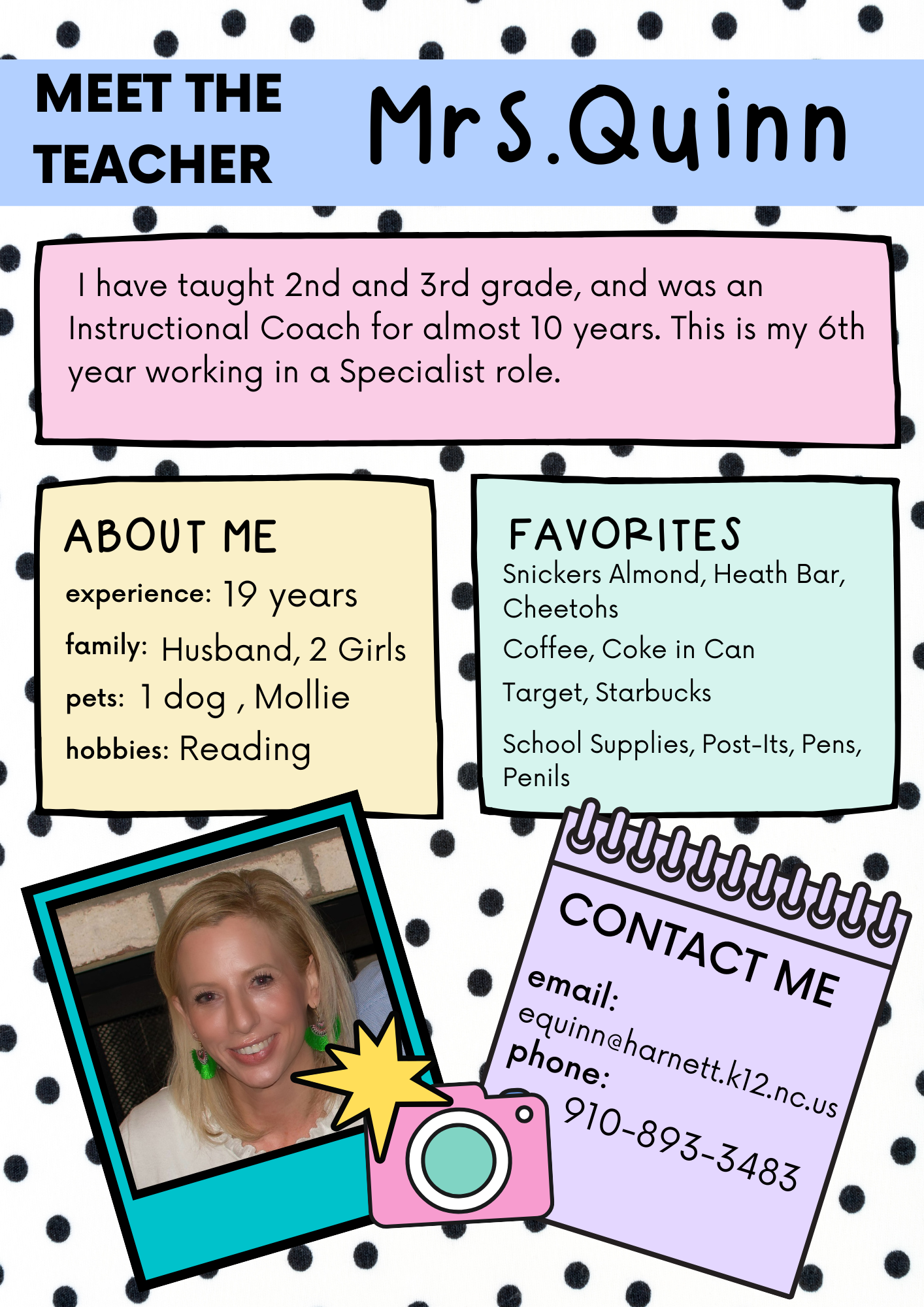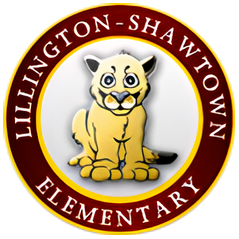MTSS Interventionist
Multi-Tiered System of Support
MTSS (Multi-Tiered System of Support) intervention is for students who need some extra support to reach grade level expectations. Our team does one-on-one and small intervention groups for students at all grade levels that need extra assistance. Our goal is to target struggling students early and intervene quickly to help them close the gap to grade level expectations.
Your MTSS Interventionist at LSES are...
Jennifer Harvell and Emily Quinn
Visit this NCDPI Link for More Information about the MTSS Process in North Carolina: https://www.dpi.nc.gov/students-families/parents-corner/multi-tiered-system-support-mtss-families


Degrees/Certifications
Associate's degree in Arts
Bachelor's degree in Elementary Education from University of Phoenix
Reading Recovery Certification

Degrees/Certifications. Elementary Education Undergrad and Masters Degree from Campbell University
Reading Recovery Certification
Academically Gifted Certification
English as a Second Language Certification
Reading Specialist Certification


Common Core Standards
Link to Quick Reference of Standards
READING STRAND: K-12 Standards for Reading define what students should understand and be able to do by the end of each grade. Students should demonstrate their proficiency of these standards both orally and through writing. For students to be college and career ready, they must read from a wide range of high-quality, increasingly challenging literary and informational texts. One of the key requirements of the Standards for Reading is that all students must be able to comprehend texts of steadily increasing complexity as they progress through school. Students should also acquire the habits of reading closely and independently for sustained periods of time. They need to connect prior knowledge and experiences to text. They must also show a steadily growing ability to discern more from and make fuller use of text.
Reading Standards for Literature
Key Ideas and Evidence
RL.1.1 Ask and answer questions about key details in a text.
RL.1.2 Retell stories, including key details, and demonstrate understanding of their central message or lesson.
RL.1.3 Describe characters, settings, and major events in a story, using key details.
Craft and Structure
RL.1.4 Identify words and phrases in stories or poems that suggest feelings or appeal to the senses.
RL.1.5 Explain major differences between books that tell stories and books that give information.
RL.1.6 Identify who is telling the story at various points in a text.
Integration of Ideas and Analysis
RL.1.7 Use illustrations and details in a story to describe its characters, setting, or events.
RL.1.8 Not applicable to literature.
RL.1.9 Compare and contrast the adventures and experiences of characters in stories.
Range of Reading and Level of Text Complexity
RL.1.10 With prompting and support, read and understand literature of appropriate complexity for grade 1 for sustained periods of time.
Reading Standards for Informational Text
Key Ideas and Evidence
RI.1.1 Ask and answer questions about key details in a text.
RI.1.2 Identify the main topic and retell key details of a text.
RI.1.3 Describe the connection between two individuals, events, ideas, or pieces of information in a text.
Craft and Structure
RI.1.4 Ask and answer questions to help determine or clarify the meaning of words and phrases in a text.
RI.1.5 Know and use various text features to locate key facts or information in a text.
RI.1.6 Distinguish between information provided by pictures or other illustrations and information provided by the words in a text.
Integration of Ideas and Analysis
RI.1.7 Use the illustrations and details in a text to describe its key ideas.
RI.1.8 With guidance and support, identify the reasons an author gives to support ideas in a text.
RI.1.9 Identify basic similarities in and differences between two texts on the same topic.
Range of Reading and Level of Complexity
RI.1.10 With prompting and support, read and understand informational texts appropriately complex for grade 1 for sustained periods of time.
READING FOUNDATIONAL SKILLS: The foundational skills are directed toward fostering students’ understanding and working knowledge of concepts of print, the alphabetic principle, and other basic conventions of the English writing system, including handwriting. These foundational skills are necessary and important components of an effective, comprehensive reading program designed to develop proficient readers with the capacity to comprehend texts across a range of types and disciplines. A systematic approach to handwriting instruction (manuscript and cursive) in the elementary grades is essential for students to communicate their ideas clearly. To achieve handwriting proficiency, students need to apply their handwriting skills to authentic writing activities. Instruction in the foundational skills should be differentiated. The point is to teach students what they need to learn and not what they already know – to discern when particular children or activities warrant more or less attention.
Reading Standards for Foundational Skills
Print Concepts
RF.1.1 Demonstrate understanding of the organization and basic features of print. a. Recognize and use capitalization and ending punctuation.
Handwriting
RF.1.2 Print all upper- and lowercase letters legibly.
Phonological Awareness
RF.1.3 Demonstrate understanding of spoken words, syllables, and sounds (phonemes).
Distinguish long from short vowel sounds in spoken single-syllable words.
Orally produce single-syllable words by blending sounds (phonemes), including consonant blends.
Isolate and pronounce initial, medial vowel, and final sounds (phonemes) in spoken single-syllable words.
Segment spoken single-syllable words into their complete sequence of individual sounds (phonemes).
Phonics and Word Recognition
RF.1.4 Know and apply grade-level phonics and word analysis skills in decoding words.
Know the spelling-sound correspondences for common consonant digraphs.
Decode regularly spelled one-syllable words.
Know final -e and common vowel team conventions for representing long vowel sounds.
Use knowledge that every syllable must have a vowel sound to determine the number of syllables in a printed word.
Decode two-syllable words following basic patterns by breaking the words into syllables.
Read words with inflectional endings.
Recognize and read grade-appropriate irregularly spelled words.
Fluency
RF.1.5 Read with sufficient accuracy and fluency to support comprehension.
Read on-level text with purpose and understanding.
Read on-level text orally with accuracy, appropriate rate, and expression on successive readings.
Use context to confirm or self-correct word recognition and understanding, rereading as necessary.
WRITING STRAND: To be college and career ready, students should learn how to offer and support opinions/arguments, demonstrate understanding of a topic under study, and convey real and/or imagined experiences. Students learn that a key purpose of writing is to communicate clearly and coherently. The NC ELA Writing Standards emphasize the importance of writing routinely in order to build knowledge and demonstrate understanding. The complete writing process (from prewriting to editing) is clear in the first three writing standards. These standards define what students should understand and be able to do by the end of each grade.
Writing Standards (W.1)
Text Types, Purposes, and Publishing
W.1.1 Write opinion pieces in which they introduce the topic or name the book they are writing about, state an opinion, supply a reason for the opinion, and provide closure.
With guidance and support from adults, organize information and ideas around a topic to plan and prepare to write.
With guidance and support from adults, focus on a topic, respond to questions and suggestions from peers, and add details to
strengthen writing as needed.
W.1.2 Write informative/explanatory texts in which they name a topic, supply some facts about the topic, and provide closure.
With guidance and support from adults, organize information and ideas around a topic to plan and prepare to write.
With guidance and support from adults, focus on a topic, respond to questions and suggestions from peers, and add details to
strengthen writing as needed.
W.1.3 Write narratives in which they recount two or more appropriately sequenced events, include some details regarding what happened, use
temporal transition words to signal event order, and provide some sense of closure.
With guidance and support from adults, organize information and ideas around a topic to plan and prepare to write.
With guidance and support from adults, focus on a topic, respond to questions and suggestions from peers, and add details to
strengthen writing as needed.
W.1.4 With guidance and support from adults, use a variety of digital tools and resources to produce and publish writing, including in
collaboration with peers.
Research
W.1.5 Participate in shared research and writing projects.
W.1.6 With guidance and support from adults, recall information from experiences or gather information from provided sources to answer a
question.
SPEAKING AND LISTENING STRAND: The K-12 Speaking and Listening Standards define what students should understand and be able to do by the end of each grade. To become college and career ready, teachers must provide students with ample opportunities to communicate their thinking orally through a variety of rich, structured conversations either in whole group or in small group settings, or with a partner. To be a productive part of these conversations, students need to contribute accurate information, respond and build on the ideas of others, use data and evidence effectively, and listen attentively to others.
Speaking and Listening Standards
Collaboration and Communication
SL.1.1 Participate in collaborative conversations with diverse partners about grade 1 topics and texts with peers and adults in small and larger groups.
a. Follow agreed-upon rules for discussions.
b. Build on others’ talk in conversations by responding to the comments of others through multiple exchanges. c. Ask questions to clear up any confusion about the topics and texts under discussion.SL.1.2 Ask and answer questions about key details in a text read aloud or information presented orally or through other media.
SL.1.3 Ask and answer questions about what a speaker says in order to gather additional information or clarify something that is not
understood.
Presentation of Knowledge and Ideas
SL.1.4 Produce complete sentences to describe people, places, things, and events with relevant details, expressing ideas and feelings clearly.
SL.1.5 Add drawings or other visual displays to descriptions when appropriate to clarify ideas, thoughts, and feelings.
LANGUAGE STRAND: Language skills are inseparable from and vital to reading, writing, speaking, and listening. Even though these skills are in a separate strand, it is important for students to use effective and correct language skills in all contexts. The NC ELA Language Standards emphasize the use of accurate language skills, not just the identification of accurate language skills. The Grammar and Conventions Grade Band Continuums allow for differentiation and re-teaching as needed. It is important that students begin to demonstrate proficiency in the lower grade(s) of each band, while students in the highest grade of the band should demonstrate proficiency of the listed language skills by the end of the school year.
Language Standards
Conventions of Standard English
L.1.1 Demonstrate command of the conventions of standard English grammar and usage when writing or speaking; demonstrate proficiency within the K-1 grammar continuum. (See Language Standards – Grammar Continuum page 8)
L.1.2 Demonstrate command of the conventions of standard English capitalization, punctuation, and spelling when writing; demonstrate proficiency within the K-1 conventions continuum. (See Language Standards – Conventions Continuum page 11)
Knowledge of Language
L.1.3 (Begins in grade 2)
Vocabulary Acquisition and Use
L.1.4 Determine and/or clarify the meaning of unknown and multiple-meaning words and phrases based on grade 1 reading and content, choosing flexibly from an array of strategies: context clues, word parts and word relationships.
L.1.5 With guidance and support from adults, demonstrate understanding of nuances in word meanings.
Sort words into categories to gain a sense of the concepts the categories represent.
Define words by category and by one or more key attributes.
Distinguish shades of meaning among verbs differing in manner and adjectives differing in intensity by defining or choosing them or
by acting out the meanings.
L.1.6 Use words and phrases learned through conversations, reading, and being read to, including common conjunctions.


